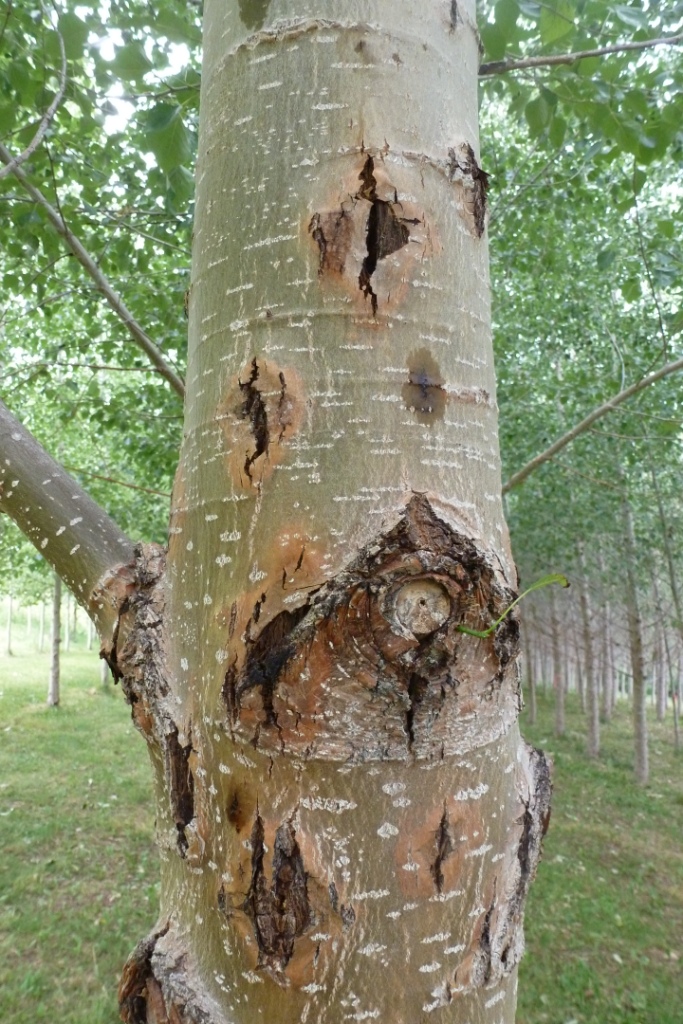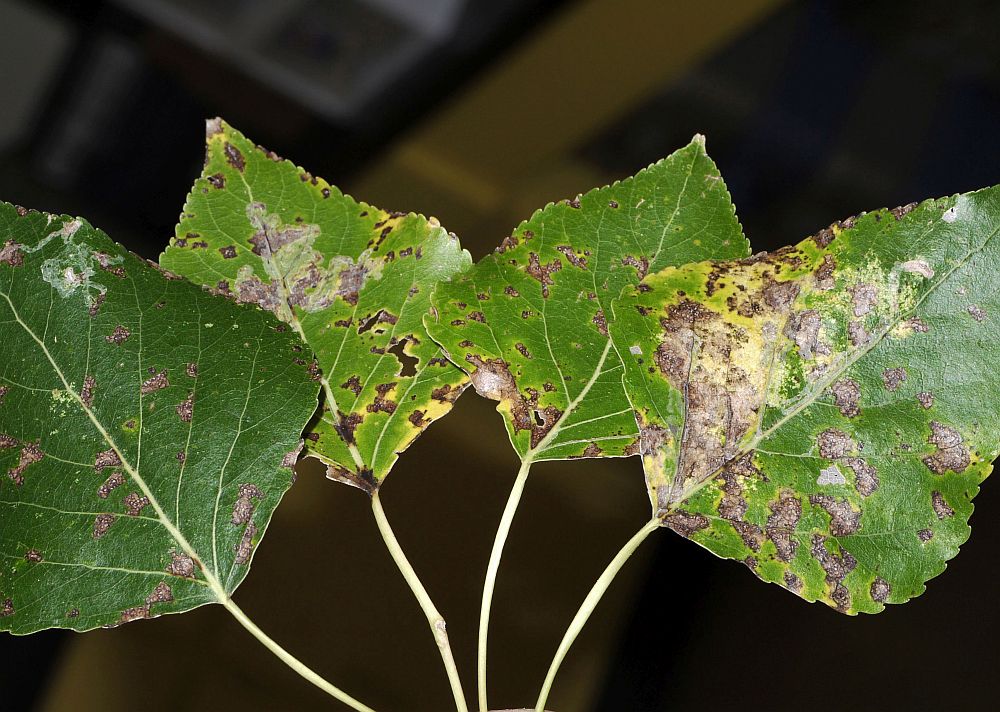Septoria canker and leaf blight
Sphaerulina musiva
Septoria canker and leaf blight has recently become established in British Columbia. It was imported on hybrid poplar cuttings from eastern North America.
On this page
Description
The main distinguishing feature of the septoria canker and leaf blight is its ability to induce two types of symptoms:
- Leaf spot
- Perennial cankers of stems and branches
The number and size of leaf spots varies with the hybrid. The spots are angular or irregular in shape.
Host tree species
Canker formation in British Columbia is associated with hybrid poplar species.
Disease cycle
Canker development begins with tissue discolouration. Then, a depressed area of necrotic tissue forms, eventually leading to stem deformation. In more severe cases cankers can lead to stem breakage.
Management
It's possible to reduce the magnitude and spread of this disease by removing and destroying the leaves of infected trees that drop to the ground in the fall.
Impact
The spots can cause a reduction in the tree’s photosynthetic activity and occasionally lead to premature defoliation.
The disease is limited to areas where hybrid poplar is grown in the Fraser Valley and some locations in the Okanagan Valley.

Multiple cankers above and below the branch scar on the stem of a hybrid poplar tree.

Poplar leaves affected by Septoria spp.
Contact information
Contact us if you have questions about Septoria canker and leaf blight in British Columbia.
